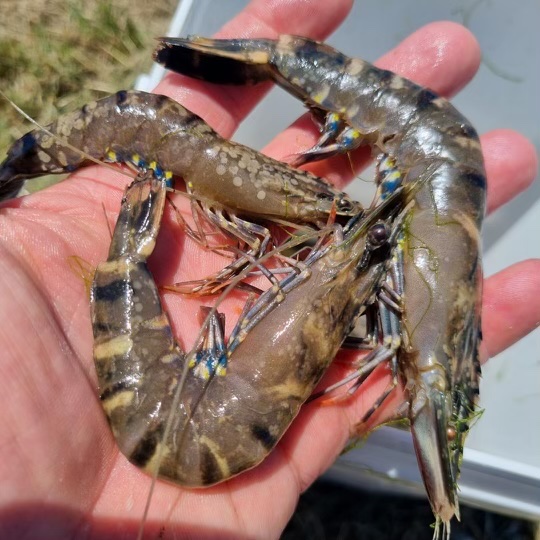Clarence River prawn fishers and farmers to receive $21 million as NSW Government invests in their future
Wednesday, 14 June 2023
The NSW Government has further bolstered its commitment to biosecurity with the announcement of a $21.4 million plan for the response to and recovery from White Spot which has devastated prawn fishing and farming along the Clarence River on the North Coast.
Minister for Agriculture Tara Moriarty said the funding is for both the ongoing biosecurity response to White Spot and a targeted assistance package for industry.
“Biosecurity is the number one issue, it presents the most significant threat to our primary industries sector – as well as our economy, environment and communities,” Minister Moriarty said.

“This investment recognises the critical importance an effective response to White Spot has on prawn fishing, farming and trade in Australia. It acknowledges the efforts of fishers and producers from the Clarence River region to the ongoing eradication effort and aims to ensure their ongoing contribution of the local fishing and aquaculture industry in the region.
“Biosecurity and fisheries experts from NSW Department of Primary Industry (DPI), working closely with local and national industry, have managed to contain the spread of the virus and are now working to support industry maintain and implement biosecurity measures that will minimise potential future introduction of white spot.
“The DPI recovery team has been on the ground since the first detections of White Spot and many affected fishers and producers have presented options to the team which have been considered when putting this plan together.”
The recovery package includes:
- $5.4 million to help secure the future for Clarence River prawn fishers,
- $1.5 million to help prawn farmers upgrade their operations to better protect the environment,
- $309,000 rent fee waiver for the Clarence River Fisherman’s Cooperative,
- $82, 000 rent fee waiver for mooring fees for the Clarence River prawn trawlers,
- $165,000 in waivers for all DPI Administration fees for affected prawn fishers and farmers,
- $700,000 to waive interest payments for Seafood Innovation Fund Loans,
- $1 million in surveillance and diagnostic activities
- $105,000 for the mental health ‘Stay Afloat’ program.
NSW Chief Veterinary Officer Dr Sarah Britton said a critical component of the plan is the long-term measures to help drive business and trade continuity in NSW and other parts of Australia.
“A number of new and enhanced on-farm biosecurity measures will be essential in ensuring businesses can continue operations safely and securely,” she said.
“These measures are set out in a new Control Order, which includes the continuation of current restrictions on movement of green decapod crustaceans from the existing Clarence River Control Zone for two years.
“This approach will help support NSW work to implement nationally agreed surveillance to demonstrate freedom, and underpin future market access
“White Spot poses no threat to human health and NSW prawns remain safe for human consumption. NSW prawns are available from local seafood suppliers.”
More information is available from the NSW DPI website at www.dpi.nsw.gov.au
What are the characteristics of White Spot?
Signs of White Spot in aquaculture within tanks and ponds include:
- rapid onset of mass mortality (80% or more) in farmed penaeid prawns during the grow out period
- lethargy
- cessation of feeding
- aggregations of moribund prawns near the water surface at the edge of the rearing pond or tank
Prawns may display:
- a loose carapace
- high degrees of colour variation, with a predominance of darkened (red-brown or pink) body surface and appendages
- white calcium deposits embedded in the shell, causing white spots 0.5 – 3.0 mm in diameter
Please note, as with any aquatic disease, diagnosis cannot be made without appropriate laboratory testing. For information on how to submit samples for diagnosis contact NSW DPI Aquatic Biosecurity on (02) 4916 3900 or the Emergency Animal Disease Hotline on 1800 675 888 or by email to aquatic.biosecurity@dpi.nsw.gov.au.
More information on the characteristics of White Spot:







